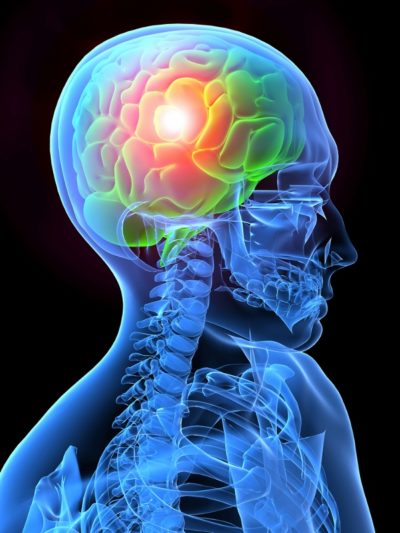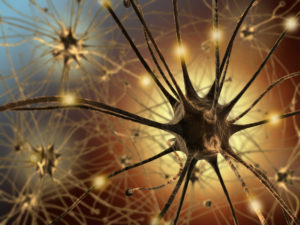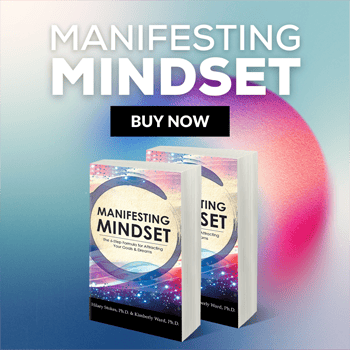Your Plastic Brain
Perhaps you have heard the notion that you can change your brain. In fact, scientists have proven that your brain is being shaped, molded and changed by your experiences every day. This is referred to as neural plasticity or neuroplasticity. Just as a plastic water bottle becomes pliable when heated, your brain is being influenced and shaped by what is happening in your life. This single scientific breakthrough has significantly altered our understanding of how to change habits, increase happiness, improve health and even change our genetics.
Neural plasticity has evolved as the study of the plastic and malleable nature of the brain. Rewiring your brain is a dynamic process that happens within the relationship of your mind, brain, and body. They are intricately interconnected as a sophisticated system to ensure your survival and homeostasis. What happens to one of these systems has a direct impact on the others.1
What does this mean for you? You can use your mind to change your brain and increase your levels of happiness, health and wellbeing. Tapping into self directed neuroplasticity or your mind, body and brain’s ability to change is empowering.
People are just as happy as they make up their minds to be.
— Abraham Lincoln
According to Michael Merzenich from the book, The Brain that Changes Itself, practicing a new habit under the right conditions, can change hundreds of millions and possibly billions of the connections between the nerve cells in our neural pathways. The human brain is made up of an estimated 100 billion neurons making a total of 100 trillion neural connections. This is a lot of neural power, right at our fingertips.
Neuroplasticity for Happiness and Emotional Wellbeing
Let’s look at a demonstration of neuroplasticity from brain science research. When you engage in practices that increase feelings of happiness, you increase synapses or brain activity in your left prefrontal cortex. As you continue to feel happy, you strengthen the synapses and brain’s activity and solidify brain pathways that make it easier to replicate feelings of happiness. People who are optimistic have more activity in their left prefrontal cortex than people who are pessimistic.2 Neuroplasticity has opened doors of hope for transforming mental health issues such as depression and anxiety, for changing unhealthy habits, and for increasing the potential to experience lasting happiness.
Brain plasticity appears to be the physiological basis for the possibility of transforming our minds. By mobilizing our thoughts and practicing new ways of thinking, we activate or brain’s neuroplasticity, reshape our nerve cells and change the way our brains work.
— Dalai Lama and Howard Cutler3
Brain Plasticity: How to Use Your Mind to Change Your Brain
Mental activity strengthens the neural pathways in your brain associated with what you focus on with your thoughts and feelings. This is the way the brain functions in relationship to the mind. Understanding the way the brain works in connection to the mind and body gives us the ability to change. To oversimplify this—but, nonetheless, clearly state what is happening—if you focus on happiness with your thoughts and feelings, you strengthen happiness pathways. If you focus on stress with your thoughts and feelings, you strengthen stress pathways. Every thought you think and feeling you feel, strengthens the circuitry in your brain known as your neural pathways. The science, study and application of how the neuroplasticity works is a whole new language. Neural pathways are the basis of your habits of thinking, feeling, and acting. They are what you believe to be true and why you do what you do. Donald Hebb’s landmark discovery in 1949, “neurons that fire together wire together,” best explains the process of forming, strengthening, and solidifying neural pathways.4 We experience these pathways as our patterns in important areas of our life such as relationships, food, money, career, health and happiness levels.
Brain Pathways
Hiking trails are similar to your brain pathways. Just as a grassy path becomes flattened, matted and worn away every time a hiker walks over it, as you focus on something with your thoughts, feelings, and behaviors, you strengthen your brain pathways. Over the days, months and years a well-traveled hiking trail becomes a well-worn pathway. Compare this to a trail that is not well-traveled or perhaps a faint trail made by small animals. These trails might be noticeable to the naked eye, however their visibility pales in comparison to the trails that get higher foot traffic.
This is great news for making desired changes such as engaging in a new behavior and new activities and thinking healthier thoughts. As long as you know how to develop and strengthen neural pathways, you can change just about anything you want. This is also why the habits you have had for many years are the most challenging to change. They have carved the most well-worn grooves, or deepest trails, in your brain. Thus, the pathway related to getting dressed in the morning at 50 years old is much deeper and worn than the pathway you had at 8 years old.
Create New Habits with New Neural Pathways
Fortunately, as you practice traveling down new pathways, you naturally weaken old pathways.5 As you think similar thoughts and feel similar feelings, you either create new habits and beliefs or solidify old ones. Eventually, through repetition and feeling intensity, your new behavior and new habits run on autopilot.6 For example, if you consciously focus in the present moment on exercising four times a week by reviewing your goals daily, talking to others for support, visualizing your success, getting to bed early, and meeting with a fitness trainer weekly, you rewire your new habit of physical exercise. However, if you don’t consciously direct your mind’s attention onto your exercise goal, you will find your strongest existing patterns of sleeping-in will run on autopilot. Existing and often undesired automatic habits drive your brain, body, and behavior. Nevertheless, over time and under the right conditions, tap into your brain’s ability to create new pathways, change old habits and experience lasting results.
You might be asking, if my brain is changed as easily as overheating a plastic container in the microwave, why is it so hard to stick to a goal, new diet, fitness program or stop a habit of self sabotage?
Path of Least Resistance
Most people live on autopilot most of the time. This is because our neural pathways operate under the law of least effort, or the path of least resistance. The most worn path is the strongest and easiest to travel. It’s like traveling down a super highway or Olympic mogul ski run. It allows you to conserve mental energy and respond quickly to your life experiences. This type of automatic conditioning can be seen in the body memory of professional athletes or top piano players. It can also be seen the last time you drove home from work yet didn’t recall the entire trip.
The simple truth of the matter is that most people are not aware that they are recycling yesterday’s old news. It has been said that by the time we are 35 years old, up to 90% of what we think, feel and do is recycled from our past. At first blush this can sound a bit depressing. It is true, we are creatures of habit and as such tend to take the path of least resistance whenever possible. We develop beliefs and habits of behavior pertaining to our relationships, money, career, health, driving, dressing, fitness and our bodies. We then look to confirm and validate these beliefs in our everyday experiences. Habits are helpful in the case of driving a car, mastering a work skill or learning a computer program, however they can be highly limiting when applied to our relationships, bodies or happiness levels. This is one reason why many people set the same goals each year about getting fit and eating healthy. Rest assured, change is absolutely possible, yet in order to stop recycling old habits of eating or exercising you need to understand how to rewire your brain.
How to Create New Neural Pathways
As you look at forming new neural pathways you’re going to confront your existing beliefs that keep your current neural pathways in place. If we look at creating new neural pathways for feeling happier as an example, you will likely be examining beliefs that are keeping you stressed and unhappy. Beliefs play a central role in maintaining your patterns of stress or happiness.
What Are Beliefs?
Beliefs are often regarded in your mind as the truth or facts of a situation. In reality, they are thoughts you have been thinking and emotions you have been feeling over and over. They are strong opinions at best. But they aren’t necessarily right or wrong.
They are based on experiences from your past that have been validated repeatedly over the years by similar new experiences. For instance, if you grew up with parents who didn’t show much physical affection, you may have developed the belief that displaying affection in public is not how proper couples should act. As you get older and begin to date, you may notice feeling uncomfortable when your boyfriend/girlfriend tries to put an arm around you, hold your hand, or kiss in public. You may not even be sure why you feel so uncomfortable, but in your mind you believe it’s wrong and improper to be affectionate in public. This belief may cause a lot of tension in your relationships.
Interpretations vs. Facts
Interestingly, beliefs are typically not even based on facts of the experiences but rather interpretations of the facts. In any given situation, there are the facts and then there are your interpretations. Generally, these two factors are very different. This is why five children growing up in the same family can have five different interpretations of their childhood experiences. Most often we live out of our interpretations as if they were the facts. This is where we get into trouble.
Let’s return to the example of your parents who didn’t show physical affection. There is a multitude of reasons why they might not have shown affection. These reasons typically have more to do with the health of their connection and communication than with any ideal of morality or right/wrong behavior regarding public displays of affection. If you don’t question or examine the interpretations that form this belief, then you will likely stay stuck in the belief as if it were the truth or facts about how to act when in a relationship. Consequently, you may never experience the magic of a romantic walk on the beach holding your partner’s hand.
You don’t have to look far into differing political, religious, and moral beliefs to see how and why our interpretations get us in trouble. Interestingly, once a belief is in place, you spend the rest of your life defending it. This is because of the biological bias that prioritizes self-preservation, which translates into being right. Let’s say you want to experience greater happiness. In order to create new neural pathways of happiness, you have to believe it’s right for you to be happy. Ironically, although most people want to be happy, they have conflicting subconscious beliefs regarding actually being happy.
Stress is a Path of Least Resistance
In line with understanding how the path of least resistance works regarding outdated beliefs, it also points to the self-sabotaging potential of stress. Dubbed the ‘Epidemic of the 21st Century’, stress is a major saboteur of healthy neural plasticity. In its true-to-form plastic nature, the brain changes into what it’s most influenced by. Consequently, because of the predominance of chronic stress, the analytical brain is highly influenced by the emotional brain. The repetition and emotional intensity of the stress response easily overrides feeble attempts at positivity; instead, the analytical brain changes in structure to match the stress. Norman Doidge refers to this phenomenon:
Neuroplasticity has the power to produce more flexible but also more rigid behaviors—a phenomenon I call “the plastic paradox.” Ironically, some of our most stubborn habits and disorders are products of our plasticity. Once a particular plastic change occurs in the brain and becomes well established, it can prevent other changes from occurring. It’s by understanding both the positive and negative effects of plasticity that we can truly understand the extent of human possibilities.
Nervous System Change
Change that isn’t supported by the nervous system isn’t lasting change. Stress continues to be a daily contender in modern times with 70% of people reporting chronic stress. According to a study on Stress in America, fear of mass shootings is the most common source of stress in 2019 with health care coming in a close second. Other top stressors include immigration, safety, discrimination, acts of terrorism, climate change, sexual harassment, financial worries, workplace stress, and social media pressures. Diffusing stress through self-awareness and self-regulation strategies that target nervous system regulation are vital components of rewiring neural pathways. In our counseling practice we help clients utilize the top four conditions for supporting neural plasticity and rewiring their brain.
Some of the mind body practices we use include meditation, somatic therapy, and Brainspotting therapy.
- Positive Emotion
A thought without intense emotion and feeling has no meaning, no value, and no real power to effectively engage your neural pathways. Intensity of emotion and feeling is required to take an experience and make it a solidified habit. The more emotion you engage, the more neurons you activate to form well-worn pathways. Emotions and feelings act as the glue that binds you to experiences. Emotional energy is the juice, or fuel, behind your thoughts that give power to your memories, goals, hopes, and dreams.7
Feel genuinely and emotionally connected to your intention to be happy with feelings of hope, trust, and positivity.
PRACTICE: Do something everyday that you enjoy. While you are engaged in this good feeling activity, focus on the feelings of achieving your goals and intentions.
- Repetition and Practice
Neural pathways are strengthened into habits through the repetition and practice of thinking, feeling and acting.
PRACTICE: Start your morning passionately declaring aloud your goals for the day. Declarations send the power of your subconscious mind on a mission to find solutions to fulfill your goals.
- Visualization
Visualization is almost as powerful as the real thing given your brain cannot tell the difference between something real or imagined. Research shows that anytime you are thinking, you are engaging and thus conditioning neural pathways. Consequently, whether you are reminiscing about the past, thinking about the present or anticipating the future you are strengthening the neural networks associated with whatever you are thinking about. The most important part of using visualization to strengthen healthy habits is to engage your emotion. Emotion provides the fuel to enlist more neural power for creating powerful neural networks.
PRACTICE: Spend 10-15 minutes per day visualizing yourself achieving your goals. As you use your mind to imagine, it should be so vivid, dynamic and pleasing that it easily engages positive emotion.
- Meditation
The true masters of manifesting meditate daily. When you meditate you slow down the nonsense, ungrounded chatter of the busy mind and access the calm abiding wisdom of your inner awareness and the skill of laser focus. Meditation is the process of relaxing the body and quieting the mind. In order to tap into the benefits of neural plasticity you have to disengage the stress response and stimulate the relaxation response. When you are stressed your brain rigidly defers to the strongest neural pathways out of survival and the path of least resistance. Consequently, during stress you do not have access to newly formed neural networks because they have not been tried and proven yet. Most people live in a perpetual state of stress believing feeling tense, time pressured or overwhelmed is the norm. This is simply not true and is the result of an undisciplined mind and body.
The prefrontal cortex is the actual mechanism in the brain that meditation activates, which helps the body shift from the stress response to the relaxation response. It has been called the clutch that releases the gas pedal and applies the brakes. Research shows that meditation increases gray matter in the brains prefrontal cortex. The prefrontal cortex of meditators is actually larger than that of nonmeditators. Researchers at Harvard, Yale, and the Massachusetts Institute of Technology were the first to discover that meditation alters the structure and function of the brain and specifically the prefrontal cortex. According to Sara Lazar, leader of the study and a psychologist at Harvard Medical School,
Our data suggest that meditation practice can promote cortical plasticity in adults in areas important for cognitive and emotional processing and well-being.8
PRACTICE: Spend 10 minutes each day sitting still while focusing on your in-breath and out-breath. Retrieve your mind anytime it wanders onto anything but your breath. Meditation is the highest form of mental training that disciplines the mind to focus on what you want and allows the nervous system to bring about homeostasis. The type of meditation is not as important as the consistency of practice. Consider trying different techniques such as practicing mindfulness, loving kindness, breath awareness, walking meditation or visualization.
If you want to learn more about how these four steps can be applied in your life click here and start the journey with The Happy Map: Your roadmap to the habit of happiness
Coaching and Counseling
The 6-step formula for attracting your goals and dreams and founders of Authenticity Associates Coaching and Counseling. They are passionate about combining the best of holistic and traditional approaches to health and happiness. If you are interested in learning the answers to the most frequently asked questions on how to decrease stress and increase happiness sign up for their free video series.
- Begley, S. (2009). The plastic mind: New science reveals our extraordinary potential to transform ourselves. London: Constable and Robinson.
- Davidson, R. (2004b). What does the prefrontal cortex “do” in affect: Perspectives on frontal EEG asymmetry research. Biological Psychology. 67(1–2), 219–233.
Fredrickson, B. (2009). Positivity: Groundbreaking research reveals how to embrace the hidden strength of positive emotions, overcome negativity, and thrive. New York: Crown Publishing.
- HH Dalai Lama & Cutler, H. (1999). The art of happiness: A handbook for living. New York: Riverhead.
- Hebb, D. (1949). The organization of behavior: A neuropsychological theory. New York: John Wiley and Sons.
- Spear, L. (2000). The adolescent brain and age-related behavioral manifestations. Neuroscience Biobehavior Review, 24, 417–463.
- Doidge, N. (2007). The brain that changes itself. Stories of personal triumph from the frontiers of brain science. New York: James H. Silberman Books.
- Fredrickson, B., & Branigan, C. (2005). Positive emotions broaden the scope of attention and thought–action repertoires. Cognition and Emotion, 19, 313–332.
Fredrickson, B., & Joiner, T. (2002). Positive emotions trigger upward spirals toward emotional well-being. Psychological Science, 13, 172–175.
- Lazar, S., Kerr, C., Wasserman, R., Gray, J., Greve, D., Treadway, M., McGarvey, M., Quinn, B., Dusek, J., Benson, H., Rauch, S., Moore, C., Fischl, B. (2005). Meditation experience is associated with increased cortical thickness. Neuroreport, 16(17), 1893–1897.










